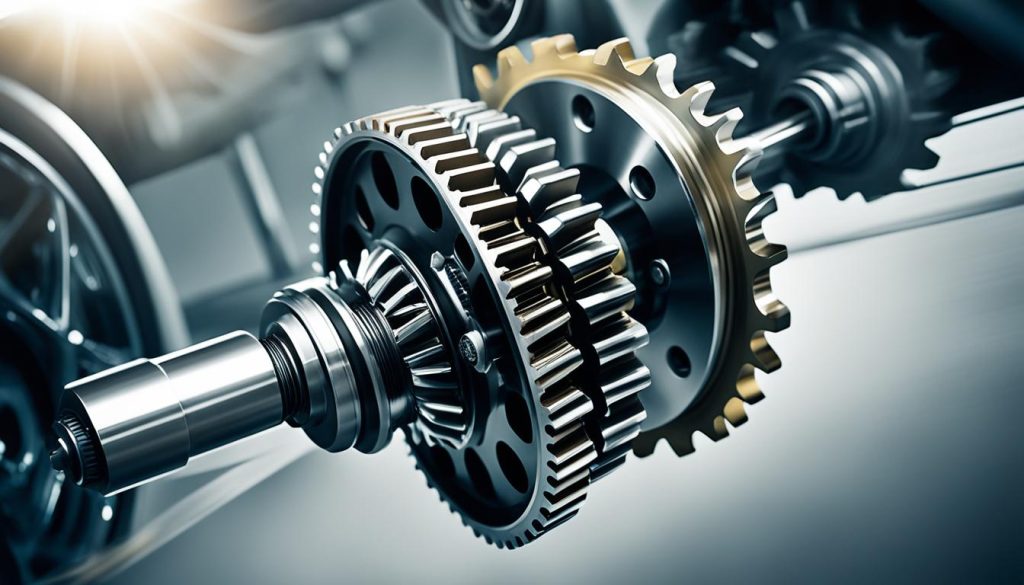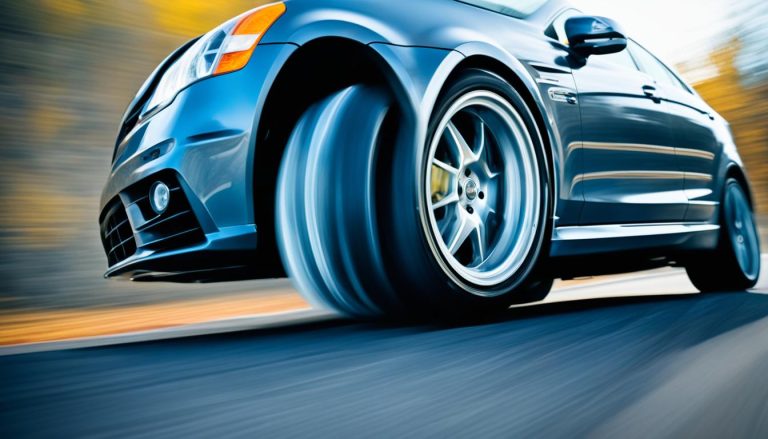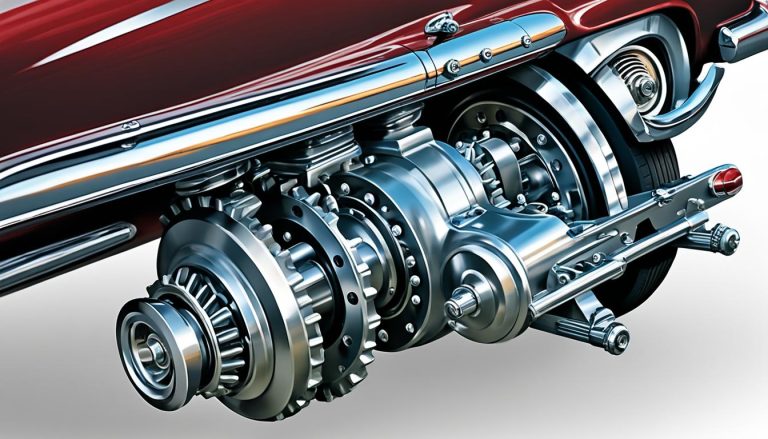Open Rear End vs Limited Slip: Best for Your Car?
When it comes to enhancing your vehicle’s performance, the decision between an open rear end and a limited slip differential isn’t one to take lightly. If you’re curious about beefing up your ride’s traction control and torque distribution, you’re in the right place. Your car’s differential plays a crucial role in the way it handles the open road, and getting familiar with this bit of automotive technology can help you make an informed choice. Do you want the ease and comfort of an open rear end for your daily drives, or does the aggressive grip of a limited slip appeal to your inner thrill-seeker? Let’s delve into what each option means for your driving experience.
Key Takeaways
- Understanding the differential type is essential for optimizing vehicle performance.
- An open rear end provides comfortable everyday driving with smooth torque distribution.
- Limited slip differentials enhance traction control for more dynamic driving scenarios.
- Choosing the right system depends on your typical driving conditions and performance needs.
- Awareness of automotive technology developments can guide your differential selection.
- The impact of the right differential on vehicle control can significantly improve your driving experience.
Understanding the Basics: What is a Rear Differential?
Entrusted with the critical role of managing torque and rotation speed, the rear differential is a central player in your vehicle’s dynamics. But what exactly does it do, and why does it matter? Let’s demystify this component and explore how it affects your driving experience, particularly when comparing an open rear end against a limited slip differential, both of which are crucial for various driving conditions, including specialized off-road vehicles.
The Role of Rear Differentials in Vehicle Dynamics
If you’ve ever wondered how your car makes smooth turns or manages traction across diverse terrains, the rear differential has been working behind the scenes. This ingenious device is tasked with the job of allowing wheels on the same axle to rotate at different speeds—a necessity for cornering without causing undue tire wear or drivetrain stress.
Differential Types: Open Rear End and Limited Slip Compared
Drill down into the mechanics, and you’ll find two primary types of differential setups. The open rear end is the more common type, delivering equal amounts of torque to each wheel. While perfect for everyday driving, it could leave you high and dry with spinning wheels under less-than-ideal conditions. Enter the limited slip differential, designed to distribute more torque to the wheel with the most grip, therefore providing an added advantage—a must-have for off-road adventurers and performance car drivers seeking that extra edge in control and traction.
Deciphering the Mechanical Process: How Power is Transferred to the Wheels
At the heart of the difference between these two types is the mechanical wizardry that allocates power. From the engine’s combustion, the twisting force—torque—is transmitted via the drive shaft to the rear differential, where it meets the ring gear. Here lies the crossroads where power is either split evenly as with an open differential or biased towards the gripping tire in the case of a limited slip setup.
Without further ado, let’s unfold a comparative table that pits these two contenders side by side.
| Open Rear End | Limited Slip Differential | |
|---|---|---|
| Torque Distribution | Equal to both wheels | Biased towards the wheel with traction |
| Ideal Conditions | Standard, even road surfaces | Wet, uneven, or off-road conditions |
| Performance | Predictable handling | Enhanced grip and control during aggressive maneuvers |
| Typical Use | Everyday driving | Performance driving, off-roading |
| Cost | Generally less expensive | More complex, thus costlier |
By being familiar with these distinctions, you can better understand your vehicle’s capabilities and make informed decisions about your driving needs or potential upgrades. Whether it’s the steady reliability of an open rear end or the gripping performance from a limited slip you seek, the choice will greatly influence your journey ahead, particularly for off-road escapades.
Open Rear End Explained: Is It Right for Your Driving Conditions?
As a driver seeking to tailor your vehicle’s performance to your daily needs, it’s essential to understand the benefits of an open differential. This system, integral to your car’s performance, directly impacts the drive shaft efficiency and overall vehicle control. Let’s delve into scenarios where an open differential could be your optimal choice.

When an Open Differential Outperforms Other Types
If seamless driving comfort and a worry-free daily commute are high on your priority list, the open differential excels. Tailored for torque distribution that complements ease and predictability, this setup allows independent wheel spinning that adapts to the majority of road conditions without pushing your vehicle to the extremes.
The Implications of Torque Distribution on Vehicle Control
In conditions where traction remains consistent, like dry asphalt or light rain, your car benefits from the equanimous torque spread that an open differential provides. However, be mindful of situations involving snow or slippery mud, where this type of differential may not offer the traction you need. Keep your drive train’s health in check through routine maintenance, and your open differential will continue to serve you reliably for many miles.
| Driving Condition | Open Differential Performance |
|---|---|
| Regular Road Use | Excellent stability and control |
| Off-road | Limited traction control |
| High Traction Demand | Performance can suffer without friction modifiers |
| Maintenance Requirements | Regular servicing with quality gear oil |
Limited Slip Differentials: Enhanced Traction for Performance Seeking Drivers
If you’re a driving enthusiast or someone who revels in the capabilities of performance vehicles, then understanding how a limited slip differential (LSD) improves your ride is essential. Unlike standard differentials, LSDs are engineered to effectively distribute torque to the wheels, enhancing traction and reducing wheel spin during dynamic driving maneuvers.
When you’re accelerating or navigating through corners, traction control is paramount. That’s where the LSD comes into its own. It fosters efficient torque distribution, transferring power to the wheel with the most grip, and allowing for spirited driving without compromising control. For those who demand peak performance from their vehicles, whether it’s on the street or a track, an LSD is not just an upgrade; it’s a requisite for pushing the boundaries of performance.

Below is a comparison of aspects between vehicles with and without an LSD unit. This may guide you in making an informed decision about whether installing a limited slip differential aligns with your performance aspirations.
| Feature | Without LSD | With LSD |
|---|---|---|
| Wheel Traction | Compromised in low grip conditions | Enhanced, less prone to wheel spin |
| Vehicle Control | Stable but less responsive in dynamic driving | Highly responsive and controlled |
| Performance in Adverse Conditions | May struggle on wet roads or off-roading | Excels in adverse weather and terrain |
| Torque Distribution | Equal to both wheels, even if one loses traction | Biased towards the wheel with the most traction |
| Ideal Use Scenario | Regular driving conditions | Performance driving and challenging conditions |
Whether you’re cornering at high speeds, launching off the line, or cruising down a wet road, the LSD is your friend, making it a sought-after feature in many high-performance marques. It translates engine power into motion more efficiently, ensuring you keep your vehicle pointed where it should be—on the road.
- Regulating Power: LSDs regulate the power between wheels, reducing wheel slippage under power.
- Racing and Drifting: If you’re into racing or drifting, an LSD is crucial for maintaining balance and handling during these high-stress driving situations.
- Adverse Weather Driving: For those who live in areas with frequent rain, snow, or icy conditions, the LSD improves safety and performance.
Dive into the world of performance vehicles, and you will quickly see that the limited slip differential isn’t just an accessory; it’s a fundamental component that defines the driving experience. It allows you to push your vehicle to its limits while maintaining the confidence that it will handle exactly as you expect it to—consistently and reliably.
The Performance Debate: Open Rear End vs Limited Slip
When you’re caught in the crossfire of the vehicle performance debate, the choice between open rear ends and limited slip differentials might seem complex. These differential types are pivotal for the optimal functioning of the rear axle and harnessing effective traction control. Let’s delve into the nuances that distinguish one from the other and consider which may be the right fit for your driving needs.
| Aspect | Open Rear End | Limited Slip Differential |
|---|---|---|
| Driving Conditions | Suitable for everyday, consistent road conditions. | Performs better in variable, often challenging conditions. |
| Traction and Control | Provides smooth handling but can struggle with traction on slipper surfaces. | Offers aggressive traction with enhanced control in slippery conditions. |
| Vehicle Performance | Ideal for casual driving, emphasizing comfort over performance. | Preferred for high-performance scenarios like off-roading or track racing. |
| Cost-Efficiency | Tends to be more cost-effective with a simpler design. | More expensive due to its complexity and additional components. |
While cost is a tangible factor in decision-making, the subtleties of performance nuances are just as crucial. An open rear end differential, with its lower cost and simpler setup, may appear at first glance to be an attractive option. Yet, in terms of sheer vehicle performance, limited-slip differentials often come out on top—particularly when that unexpected patch of ice or puddle tests your car’s mettle.
Remember, the right differential is not simply a matter of expense, but it’s about synchronicity with your lifestyle and driving conditions. — An auto enthusiast’s adage
- **Open Rear End:** If serenity and predictability on the road are what you treasure, this might be your calling.
- **Limited Slip Differential:** For the spirited driver who likes to navigate through every curve and corner with conviction, this is likely your match.
As you weigh your options, consider how each differential will interact with the rear axle and traction control system of your vehicle. The decision ultimately hinges on what you value most: consistent comfort or the thrill of optimal performance in every turn.

Your lifestyle and the roads you frequent should guide your choice between an open rear end and limited slip differential. Whether that road leads you through rain-soaked streets or wind-whipped desert trails, make sure your vehicle is performance-tuned to your world.
Is Investing in a Limited Slip Differential Worth It for Everyday Driving?
As advancements in automotive technology continue to enhance the way we travel, the question arises whether upgrading to a limited slip differential (LSD) is beneficial for the everyday driver. While the allure of improved vehicle performance and traction control may be tempting, it’s crucial to determine if the cost vs benefits supports such a move. LSDs are renowned for their capacity to upgrade your drive, particularly in challenging conditions, but they’re not without their additional expenditure and mechanical sophistication.
Analyzing Costs vs. Performance Benefits
When deliberating the addition of an LSD to your rear axle, it’s vital to analyze the financial implications alongside the performance perks. Vehicles equipped with LSDs undeniably shine in scenarios involving slippery roads or rigorous driving routes. They distribute torque more efficiently and minimize loss of traction, thus offering a clear advantage over their open-differential counterparts. However, this boost in performance comes at a price, encompassing not just the cost of the component itself, but also its installation and potential increases in maintenance down the line. Your decision should hinge on whether the performance gains justify the investment for your typical driving habits.
Vehicle Specific Considerations for Upgrading Your Differential
Prior to making a change as significant as a differential upgrade, consider the compatibility with your specific vehicle. Not all cars will reap the same level of benefits from an LSD—some might already handle adequately under most conditions. Factors like the make and model of your vehicle, current differential type, and typical driving environments play pivotal roles in this decision. Assess whether the added traction and superior handling of an LSD align with your needs; only then can you discern if it’s a prudent enhancement for your motoring experience. Ultimately, the value of a limited slip differential is contingent upon your individual driving scenarios and how much you prioritize control and performance in your daily excursions.
FAQ
What is the difference between an open rear end and a limited slip differential?
An open rear end distributes torque equally to both wheels but allows them to rotate at different speeds, which is good for everyday driving on consistent road conditions. In contrast, a limited slip differential distributes more torque to the wheel with better traction, decreasing the wheel spin and enhancing control in low-traction situations such as off-road or slippery conditions—ideal for performance-oriented driving.
How do rear differentials affect vehicle dynamics?
Rear differentials play a crucial role in allowing your vehicle to handle corners effectively by letting the wheels rotate at different speeds. The type of differential, whether open rear end or limited slip, affects the vehicle’s handling, traction, and overall performance, especially under varying road conditions.
What are the main benefits of an open rear end?
The main benefits of an open rear end are its simplicity, lower cost, and the comfortable, predictable handling it provides under most everyday driving conditions. Open differentials are particularly suitable where traction variation is minimal, like on clean, dry pavement.
Are limited slip differentials better for off-road vehicles?
Yes, limited slip differentials are generally better for off-road vehicles because they provide enhanced traction by transferring power to the tire with the most grip. This feature is particularly helpful in uneven terrain, where wheels are prone to slipping, and maintaining traction is critical for performance.
Is a vehicle with an open rear end easier to maintain?
Yes, vehicles with an open rear end tend to be easier to maintain due to their simpler design. Regular maintenance such as oil changes with high-quality gear oil can keep an open differential functioning smoothly.
Can a limited slip differential improve my vehicle’s performance on regular roads?
A limited slip differential can improve your vehicle’s performance on regular roads by providing better traction during acceleration and in turns. However, for many drivers, the noticeable benefits may only be apparent in more demanding driving conditions or during spirited driving.
Should I consider upgrading to a limited slip differential for everyday driving?
Upgrading to a limited slip differential for everyday driving depends on your driving conditions and whether the performance benefits justify the increased cost and complexity. If you often drive in conditions with varying traction or seek improved handling performance, then a limited slip differential might be worth considering.
What factors should I consider when deciding between an open rear end and a limited slip differential?
When deciding between an open rear end and a limited slip differential, consider your typical driving conditions, the importance of enhanced traction and handling in your driving experience, the cost of the upgrade, and whether your vehicle’s performance will significantly benefit from the introduction of a limited slip differential.
How does a limited slip differential work?
A limited slip differential works by limiting the speed difference between the two wheels on an axle. If one wheel starts to spin faster than the other (indicating a loss of traction), the limited slip differential will automatically redistribute more torque to the wheel with better ground contact, hence improving traction and control.
Does a limited slip differential impact fuel efficiency?
The impact of a limited slip differential on fuel efficiency is generally minimal. However, the increased traction and performance might lead to more aggressive driving, which can negatively affect fuel economy. The direct impact of the differential itself on fuel efficiency is not significant.






